How to Start Seeds Indoors: Tips for Beginners
Maybe you want to try to start seeds indoors for the first time. Or maybe you’ve tried in the past with little (or no) success. While attempting to start seeds indoors can prove intimidating, once you get the hang of the basics, it’s really not as hard as you might think.
And the benefits are many! You save money by not having to purchase transplants, you can start your season earlier, and you get the joy of watching your plant grow from seed to harvest! (And that’s more rewarding than you think!)
Though I have been starting seeds indoors for several years, I wanted to ask an expert to weigh in on best practices. In this episode of the Beginner’s Garden Podcast, I talked to Kevin Espiritu of Epic Gardening, and he shared with me what you need to start and grow your seeds inside. Click below to listen to the podcast or keep reading for the full article.
*links below are affiliate links. If you click through and purchase, I will receive a commission at no extra cost to you. Thank you for your support.
Seed Starting Supplies
Beginning gardeners often question what supplies they need to start seeds indoors. Though the supply list isn’t as long as you think, these basics will ensure you get the best start to your seed starting venture.
Seed Starting Kit
A basic seed starting kit is great for beginners. Most kits will include a propagation tray, an insert to help separate your seedlings, and a humidity dome. Some may include a seedling heat mat. This is most of what you’ll need to get started.
The humidity dome is pretty important because it helps to mimic the moisture and temperature in nature that triggers the seed to germinate. The heat mat is great because even indoors in the winter it can get too cold for some seeds to germinate.
Seedling Heat Mat
If your seed starting kit doesn’t come with a seedling heat mat, I recommend purchasing one like this one. Even in a warm home, using a seedling heat mat is a great way to increase the soil temperature. Soil temperature is extremely important in seed germination (both inside and outside in the garden).
Grow Lights for Seed Starting
Do you need a grow light to start seeds indoors? Basically, yes. Perhaps it’s possible that you could start your seedlings in a sunny window, but most experts will tell you it’s not likely. This is where most indoor seed starting efforts fail. Seedlings simply need more light than even a sunny window can provide — especially when you consider that you’ll be starting your seeds in the short days of winter.
Personally, my success in starting seeds only came after I purchased an indoor grow light. My window attempts never worked. The plants that did survive were clearly stressed, and you don’t want to start out your valuable vegetables under stress.
You can choose and LED or a fluorescent grow light. Here is a simple LED Grow Light I have used that has worked well for me. LED lights provide the right spectrum that plants need to grow and they are the less expensive option. On the other hand, a fluorescent grow light is a little more expensive but will give you much more space for your seedlings.
Seed Starting Mix vs. Potting Soil
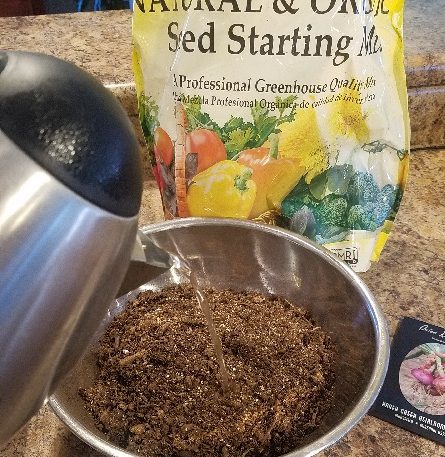
When you are starting seeds, you want to give them the best medium in which to grow. Seed starting mix is a mixture of fine particles, perfect for delicate seeds to get their start. It usually contains some compost for nutrition, peat moss, and vermiculite. Potting mix is similar to seed starting mix, but the particle size is bigger because more developed plants can handle it.
Seed Starting Pots and Containers
If you purchase a seed starting kit, the standard container included is a propagation tray. You can place many different inserts into this type of tray. But perhaps you’d like to explore other options for containers. Here are a few popular ones.
Starting Seeds in Egg Cartons
This is a popular option that is easy to find and a great way to get seeds sprouting. But the drawback is that pretty quickly after gemination, you will have to move the seedling into a larger container because of the little amount of soil. Not only does this take extra time and effort from you, but you also have to take great care in the transplant so you do not damage the tender seedlings.
Starting Seeds in Peat Pots
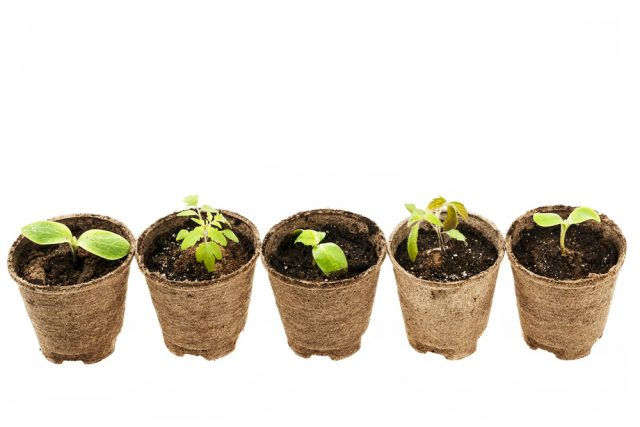
Peat pots are another popular option for home gardeners. These are little pots made entirely of peat moss that you fill with soil and plant your seed. As the seeds are growing, the peat moss helps to retain moisture, which is crucial for starting seeds. When it’s time to transplant the seedling into the garden, the peat can be easily peeled away from the root ball to make transferring to the ground easier on the plant (and you).
Starting Seeds in Peat Pellets
Peat pellets serve as containers made entirely of peat as their growing medium. (No seed starting mix required.) When you buy them, they are condensed and dehydrated. When you add water to them, they expand, and then you can plant a seed in each pellet. When the seedling is healthy, you plant the pellets directly in the ground. This is a simple and inexpensive method. Peat pellets are better for smaller plants that need less time inside than the peat pots, although you can choose different sizes of pellets for different plants.
Planting Seeds Indoors FAQ
Which Seeds Should I Start Indoors?
While every gardener will have different experiences and viewpoints on this question, most will agree that tomatoes and peppers are the best options for starting indoors. They transplant well, and the head start and indoor beginning can give to a seedling will equal more harvest potential.
Other options include broccoli, cabbage, and lettuce (not necessary, but helpful for an earlier harvest). Some gardeners will start squash, zucchini, and melons indoors, though they are not ones I recommend for beginning gardeners. Check out my list of seeds that are best started directly in the garden.
How Many Seeds Do I Plant Per Cup or Cell?
No matter the kind or quality of seed, we have to assume that not every seed will actually sprout. If you place two seeds in each cell, you are more likely to have at least one seedling sprout and grow. When more than one sprout comes up, you allow the healthiest to continue to grow and clip the other sprouts at soil level a few days after germination. The only exceptions to the “plant two seeds per cell” rule would be when what we think is a seed actually contains more than one seed, like chard or beets. Kevin has an article and video on how many seeds to plant per cell on his site.
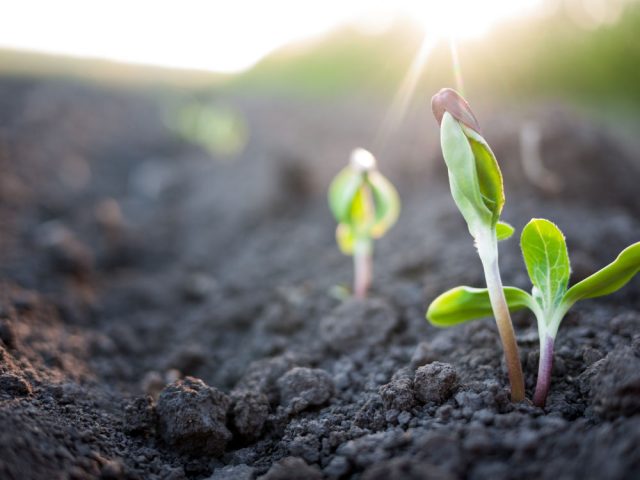
How Long Does it Take for a Seed to Sprout?
Some will sprout in 1-2 days but others will take 2-3 weeks. It depends on the seed, so look at the seed packet to know what to expect with each variety.
Do Seedlings Need Fertilizer?
Early on in a plant’s life, they typically do not need fertilization because the nutrition it needs comes from the seed. For seeds that stay inside a little longer, some fertilizer is very helpful. You can buy a fertilizer but you will want to dilute it so that it doesn’t burn your young plants.
Leggy Seedlings: What to Do
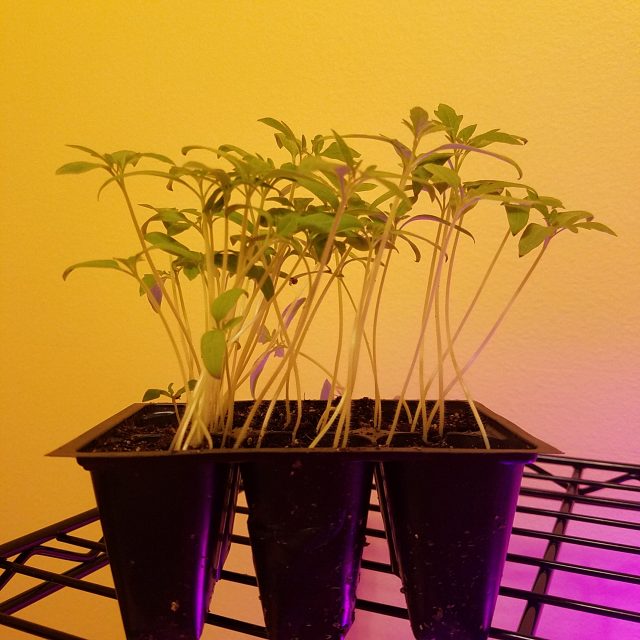
Leggy seedlings are almost always caused by a lack of light. If you catch it early, best way to solve this is to put the light as close as possible to the plant without burning it. In some cases — as with tomatoes — you could try to transplant the seedling deeper into a different cell. I have done this successfully with tomatoes. If the plant is too elongated, there may not be a way to save it, and it’s best to start over ensuring adequate light.
–
Once you understand the basics of indoor seed starting, it’s really fun to do! And with experience you’ll learn what works to help you tighten your skills year after year!
Pre-order Kevin’s book Field Guide to Urban Gardening: Sort through the Small-Space Options and Get Growing Today
Listen to the Epic Gardening Podcast
Browse the Epic Gardening articles
Seed Starting Quick Reference Guide
Which seeds should you start indoors? Which should you wait to plant directly in the garden? When? And in what soil temperatures do certain seeds germinate better? Grab this one-page quick reference guide to get your seeds sprouting and your plants growing strong!
Plus, I'll send you my "In the Garden E-mail" on Fridays, periodic updates on garden resources relevant to you, and get access to my entire bank of free garden downloads!
You are also agreeing to our privacy policy.

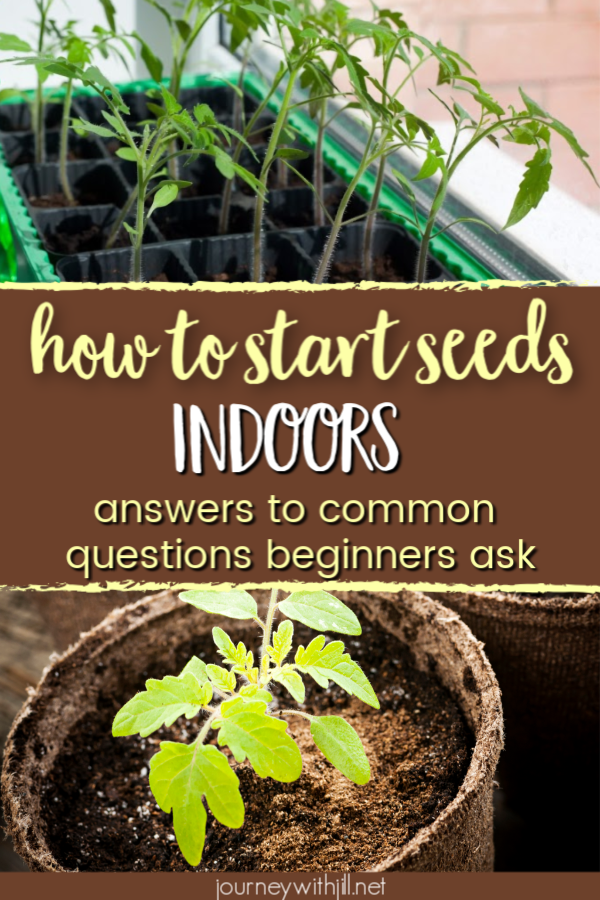
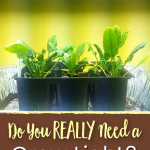
Jill,
Question for you: I am currently starting some head lettuce indoors. I have previously only grown leaf lettuce sown directly in the garden so this is new territory for me. Right now I am starting them in the 72 cell plastic starter trays. Once they get to the appropriate size, can I take them straight from the starter trays and transplant them in the garden, or should I repot them and let them grow bigger. I know a big part of this question is the timing for the zone that I live in, but I also wasn’t sure of the transplanting success when they are so small?
Hi Derek, I did start head lettuce indoors last year, but it never formed a head for me. In the South, that’s pretty much a given but I wanted to try it. It transplanted fine and I was able to harvest the leaves, but no heads. I sowed them indoors on 1/27, and I transplanted them on 3/8. My average last frost is 3/31, but we actually got our last freeze in late April. They did fine through all that. So although I can’t give you a prescriptive answer not knowing exactly your climate, I hope this helps answer your question!
I really enjoyed reading your blog post! Starting seeds indoors is always something I debate with myself (just wrote a blog post on this last week!). You are right that tomatoes and peppers are great options for this but I’m just always drawn to direct seeding. Have you tried using cold frames to direct seed warm weather plants earlier?
I just discovered your site and I’m enjoying reading your posts. Keep up the good work!
I’m with you — for the most part if I can direct sow, I will. I’ve never tried a cold frame. I’ve thought about it, but since our season is on the long side, I haven’t seen a real need for it yet. Maybe someday!
Hi Jill! I’m a newer gardener, having just completed my first growing season. I’m looking at grow lights to start my seeds indoors, and was wondering with the LED lights you recommended in this article, how big of an area will they cover? I’m building a DIY seed starting area on wire shelving and I’m trying to figure out how many I will need and which option is my best bet.
Hi Jill, I started out with just one, and it probably covered a 1-2 square foot area (2′ would be pushing it — especially when the seedlings get larger). If your wire shelving area is like mine, I think about 3-4 foot across and 1 foot deep, I used two for that one shelf.
i enjoy reading this one. for a beginner, it was a good reference to read to get ideas and create a successful garden. Thank you for sharing this informative blog.
On the Herbs Quick Planting Reference Chart, what is meant by “DOWN to Zone” 4/5/etc? Does that mean from North TO South? So the zone named is the southern-most zone something is perennial?
Down represents the number. So “down to zone 4” means it would last the winter in zone 4 but probably not zone 3. On a map, in the northern hemisphere, the more north you go, typically, the lower number of zone you’ll see. Zones are based on the lowest average annual temperature in the winter.
so the zone named is the NORTHERN-most zone it would be perennial. It just confused me because I tend to think of “down” as going North to South, like on a map. Maybe it should read this plant is perennial “up to zone 4”, etc. Thanks.